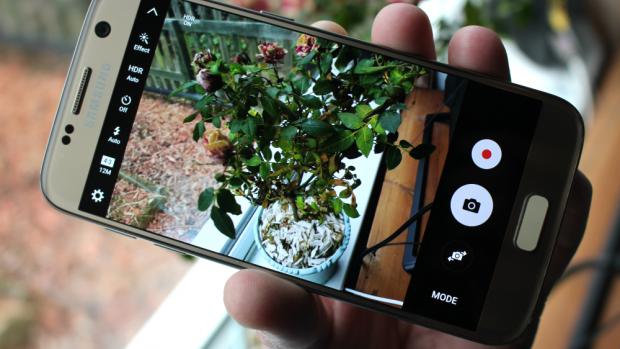
The Samsung Galaxy S7 camera capabilities are among the best we’ve ever experienced — take note competition
When a new phone hits the market the first thing many buyers do is scan the spec sheet to see what tangible improvements are on offer. Processing power, screen resolution, charging options and memory are all obvious areas for growth, but it’s stunning how many new handsets fail with a feature which pre-dates smartphones by quite some margin: the camera.
In fact, I often find that the camera is the first thing I test on a new phone. While almost all leading handsets can boast megapixel counts of at least 12, that doesn’t tell the whole story – as is evidenced by the Samsung Galaxy S7 in more ways than one.
Samsung has decided to scale back from the 16 megapixel snapper seen on the S6 to a 12 megapixel variant on the newer model, a brave move which HTC tried a short time ago with its One range.
The argument is that less pixels means bigger pixels which consequently permit more light to enter, drastically improving low-light shooting. As a result the S7 takes some amazing shots in darkened environments, with none of the extreme graininess that usually plagues low-light photography on mobile phones. I’ve been surprised at the number of snaps I’ve taken in darkened rooms which come out looking amazing.
Over the past few years I’ve been genuinely shocked at the lack of care that some Android phone makers give to the cameras and camera software which ship with their flagship phones. The biggest culprit has to be Google itself; despite making the same claims year after year regarding camera quality and focus speed, the Nexus line of phones – supposed to be leading option for Android fans – suffers from uniformly terrible photographic capabilities.
The quality of the image is rarely the issue, however – it’s the abysmal boot time of the camera app and the sluggish autofocus which really ruin things. With the Nexus 5X, I couldn’t believe how bad the default Android camera app was; it took ages to load and focus time was terrible. This is despite Google claiming that the camera was “its best yet”, following on from the snappers in the Nexus 5 and Nexus 6, both of which were also billed as massive improvements over what had gone before.



Critics of Android have often claimed that photography is one of the key areas where Apple consistently beats Google. Even a relatively old iPhone model like the 5 or 5S still boots its camera app and takes photos faster than many Android flagship phones from the past 12 months; the Sony Xperia Z5 Compact, for example, takes swell photos but again doesn’t load its camera app anywhere near fast enough, and struggles to focus quickly. The one firm which has prided itself on bucking this trend on Android is Samsung, and the Galaxy S7 has without a doubt the best camera I’ve seen on a mobile phone – and I include the excellent iPhone 6S Plus in that statement.
While it could be argued that other phones take more detailed snaps, 12 megapixels is more than enough for basic photos, unless you’re planning on blowing up the image to cover a wall. In that regard, Samsung’s decision to scale back the megapixel count should be applauded.
Even if you are a stickler for detail, the trade-off is more than worthwhile; it’s stunning how well the phone performs in dull locations. The option to save images as lossless RAW files is another boon for seasoned snappers. However, far more important to me personally is the sheer speed with which you can open the camera app with a double-press of the home button and take a photo – it feels almost instant.
I have three kids, two of which are quite young. Catching one of these hyperactive individuals in a funny moment is often impossible with past Android phones I’ve used, as it takes too long to open the app and even when it does open in time, the snap isn’t actually taken until a second or so after I’ve pressed the shutter button – and by then the moment is lost. I’ve never had a single situation like that since using the S7 and the resultant shots contain amazing detail; speed counts for a lot when it comes to mobile photography.
Samsung knows that photography is a key part of the mobile experience. As the old saying goes, the best camera is the one you have with you, but it’s strange that other handset makers haven’t given this area the same attention.
Practically every new phone from HTC, Sony and LG trumpets the fact that its camera is the best one yet, but most of these challengers ignore the fact that it doesn’t matter how good the end result is, if you can’t take that photo fast enough then it counts for nothing.
Hopefully Samsung’s continued dominance in this field will finally convince other manufacturers – and Google itself – to devote more effort to making sure that their snappers are quick as well as quality.
[“source-Gadgets”]


